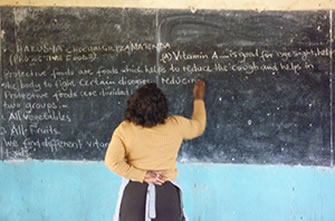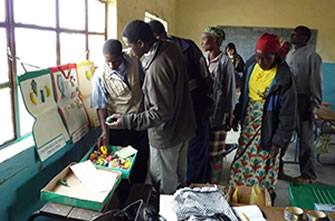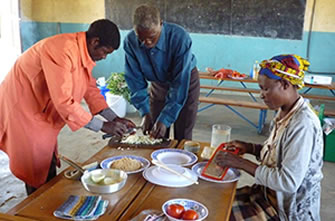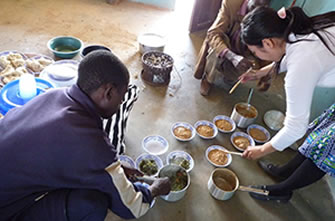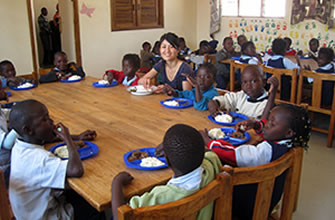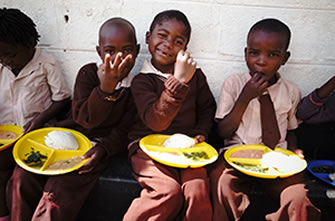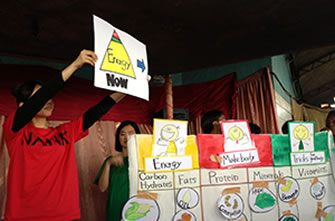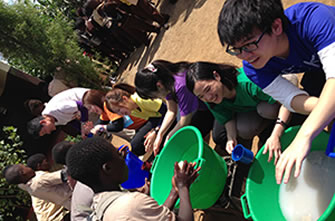School Meal Project: Combine school meal with nutrition education
Typical Zambian dish consists with Nshima made from white maize, usually served with vegetables and source of protein, such as beans, meat, and fish. However, at lower income households, it is rare to have meat or fish. The variety of vegetables they can consume daily has also been very limited. Therefore, Spirulina, which can drastically enhance the nutrition balance of such simple meals just by one scoop of tea spoon, is useful. AFF has been implementing the school meal project to create a model that enables Zambians to eat Spirulina daily at right amount since 2011.
Typical Zambian dish consists with Nshima made from white maize, usually served with vegetables and source of protein, such as beans, meat, and fish. However, at lower income households, it is rare to have meat or fish. The variety of vegetables they can consume daily has also been very limited. Therefore, Spirulina, which can drastically enhance the nutrition balance of such simple meals just by one scoop of tea spoon, is useful. AFF has been implementing the school meal project to create a model that enables Zambians to eat Spirulina daily at right amount since 2011.
In advance of the school meal project, AFF held a tasting event of Spirulina dishes to find out the acceptability of the food, in collaboration with a NGO based in Zambia. We worked together with local women to develop Spirulina recipe. Spirulina was donated byDIC Corporation, which has been supporting our project since 2009. Recipe development was supervised by Japanese students studying medicine. The event was conducted in welcoming atmosphere, combined with entertainment of Zambian songs and dance performance. The relatively high acceptability of spirulina among residents encouraged us to further advance our project.
|
Before recipe development, participants studied about nutrition |
Before recipe development, participants studied about nutrition |
|
Scenes of Cooking |
Hope it tastes good! |
Based on the recipe chosen at the tasting event, we finally started our school meal project. The first school we had partnership with was the day care center accepting children diagnosed HIV/AIDS positive in 2011, the second school was the community school operated in a low income area in 2013, and since 2014 we are partnering with a special needs school in Lusaka.
|
School meal at the daycare center |
School meal at the community school |
In the school meal project, our primary emphasis is on respecting the local food culture, and educating students the importance of nutrition and therefore, the reason why spirulina are mixed in their meals. Spirulina is in green powder format, which easily dissolves in most recipes. On the contrary, it changes the color of the meal into green and gives off distinctive smell. To cope with this characteristic, we usually mix spirulina into green vegetable relish or strong colored relish such as red beans. In addition, we provide students nutrition and hygiene education in combination with games, songs, and pictures to promote understanding of the benefit of balanced diet, as well as hand and oral hygiene. Thorough nutrition education, students grow to accept eating spirulina, although of its unfamiliarity at first.
Alliance Forum Foundation will continue trying to validate the impact and establish a model for the nutritious school meal provision combined with nutrition education, to further expand the program to wider Africa.
|
Nutrition and hygine education was developed in collaboration with the school of medicine, department of Nursing, of Yokohama City University |
They also demonstrated how to wash hands in a proper way |
For more information on the School Meal Project check our annual report


